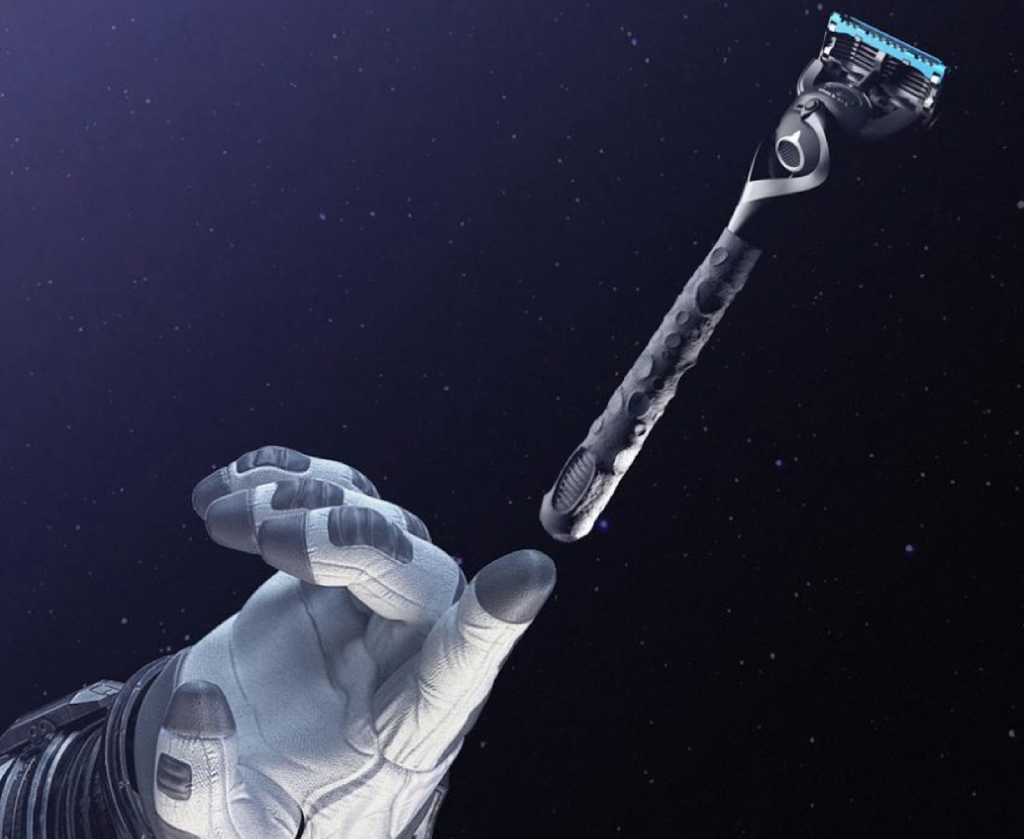In honor of the 50th anniversary of the Apollo mission Gillette produced Razor Maker Apollo with stylized 3D-printed razor handles.
The history of razors use in space is quite interesting. Now the use of electric or conventional razors in space is not severely restricted, although initially razors were banned to avoid moisture in the onboard equipment.
Both types of razors are used in space now, but the electric razors use is restricted by additional precautions. As a rule, onboard the ISS, crews shave and cut their hair near the ventilation system filters, although in the mid-1960s NASA developed special electric razor nozzles for attaching the hose leading to the hood. This option is still available.
Frank Bormann, the commander of Apollo 8 and the first man to fly around the moon, also was the first to shave in a spacesuit. However he did it not in space, but on board the helicopter after the landing. James Lovell and William Anders appeared before the press with bristles, but Bormann requested an electric razor to be prepared especially for him on the recovery helicopter, because he didn’t like himself with a beard.
Lunar program astronauts also used razors, made by Gillette in particular. The Apollo 10 crew members were the first to do that. They informed Mission Control that they were performing a secret scientific experiment under the code “Sierra-Hotel-Alfa-Victor-Echo”. In that time, creams and foaming gels that were safe for space-shaving with no need to be whipped up with a shaving brush and water were gaining popularity. The crew appeared before the reporters smooth-shaven and the command lifted the ban on razors.
The crew of Apollo 11, landed on the moon, also did not neglect shaving. There is even a video in which the command module pilot Michael Collins is shaving on Board using Gillette razor. By the way, Collins took off neatly shaved, but returned with a neat mustache, but without a beard.
Last year, Gillette together with Massachusetts-based 3D printer manufacturer Formlabs launched a pilot Razor Maker project. The idea was to make customized razors with 3D printed handles. Consumers had the choice from a range of 48 basic models with the option to add custom unique logo and text. The service is not available as of now, but Gillette offers anniversary Razor Maker Apollo.
The razors feature an exclusive moonscape handle design and two interesting symbols. On the front the razor features the NASA logo of those days. This insignia was nicknamed “meatball” when in 1975 the agency switched to the modernist NASA logotype, ornate red letters. The back reveals the boot print, a reference to the famous shots taken by Buzz Aldrin immediately after the first step on the moon surface.
The handles are produced at Formlabs Form Cell automated additive systems which are clusters of several Form 2 SLA 3D printers with Form Wash and Form Cure serviced by a robot manipulator.
The razors are compatible with Gillette Fusion 5 ProGlide with 5 blades and a trimmer on the back. The razor costs $68 apiece with one razor blade refill. The Razor Maker Apollo is limited edition with territorial restrictions.

